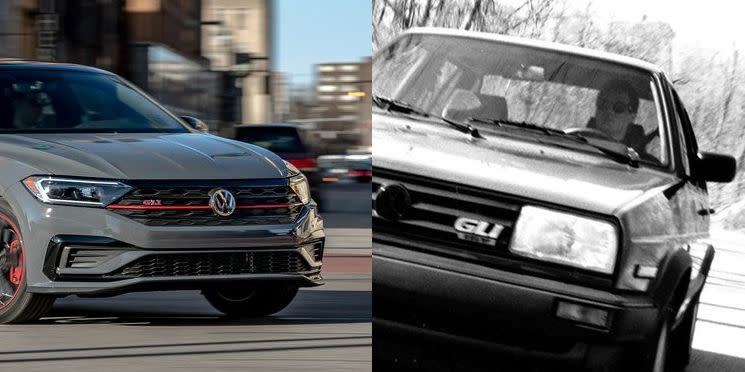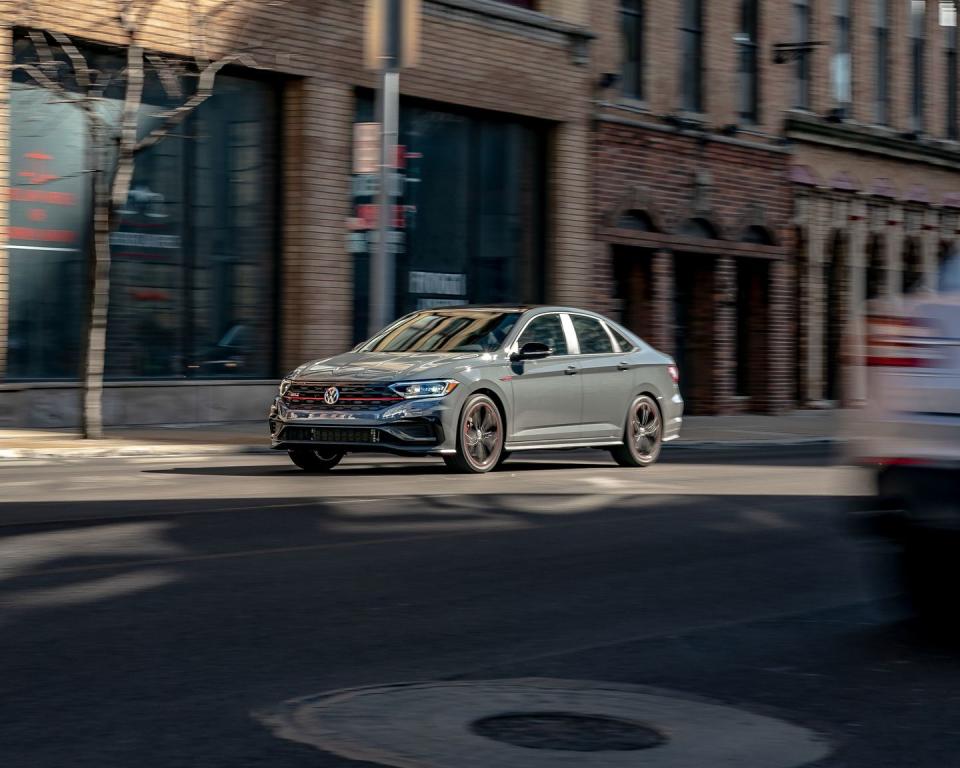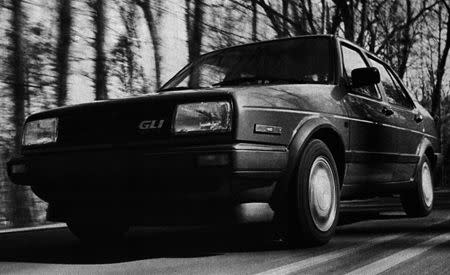From the Archive: How Has the Volkswagen Jetta GLI Changed from 1988 to 2019?

Rarely do old car reviews read like they've been published yesterday. That's because most modern cars are as relatable to their predecessors as AARP The Magazine is to undergrads. But in the 35 years since Volkswagen introduced America to the Jetta GLI, nothing about this affordable sedan's core traits and mission as a basic, driver-centric car has really changed. We reviewed the 35th-anniversary GLI this past week. It's a shiny 2019 model. And now, because Car and Driver has been testing brand-new cars for more than 60 years, we're going back to 1989.
For whatever reason, by July of that year our editors were driving a 1988 GLI. For reasons we can explain, this Volkswagen was highly competitive against cars that are nothing but footnotes today. In the late 1980s, the Mitsubishi Galant meant something even without the Japanese model's all-wheel drive. The Pontiac Grand Am was respectable, if not full-bore driving excitement. The Peugeot 405 Mi16, that French masterpiece with the Italian body, would bail from this country just two years later. The GLI, the Nissan Maxima, and the Honda Accord are the only cars mentioned in that early story that are left today. It's no coincidence that VW, in its TV ads, shows the new Jetta morphing like a butterfly out of the 1980s original. Take a look at our quotes, each separated below from before (1989) and now (2019 and one from 2013). See if you can tell the difference.
Under such conditions, you are reminded that this car comes from a country where high-speed driving is a rule and not an exception. Despite the foul weather and poor visibility, the Jetta felt stable and we could not have felt more comfortable.
What the Corolla-loving cranks always overlook is that a VW, even the lowest and cheapest version queued up at a Düsseldorf taxi stand, is engineered for the autobahn. Which is to say, it can sustain 100-plus-mph travel.
Only the second quote is modern, from our last GLI long-termer in 2013. What have decades done to handling and steering?

Easily the best-looking part of the GLI's interior is the steering wheel borrowed from the GTI. As in the hatch, there's real feel behind the GLI's leather wrapping . . . In fact, the body control, the rightness of the primary controls, and the acceleration are all right there with the GTI. (2019)
The behavior of the Jetta GLI 16V's various performance components—steering, braking, engine, tires, and fully independent suspension—convince you that they embarked together on the same mission: providing you with an excellent driving experience. (1989)

The annoying and sometimes not-annoying engine sounds:
Though the high-revving engine hauls you along quickly enough—it is the same powerplant fitted to the snake-quick GTI 16V—it lets you know that it's hard at work by keeping the decibel level high. The engine sounds seem to be anything but out of place in a sporty small sedan, but we'll admit to feeling relief when we reached fifth gear and settled in at freeway speeds—at which point the engine settles into a quiet, comforting hum. (1989)
Piped-in intake sound is adjustable and ranges from spot on in Normal to annoyingly loud and juvenile in Sport. (2019)
Big deal—the new GLI has a sixth gear. Or a seventh with the automatic.
Objectively, the new GLI is dramatically better. The DSG we tested hit 60 mph in 5.6 seconds, or 3.7 seconds quicker than the '88. Modern summer tires let it reach 0.95 g as compared to 0.80 g. Horsepower, torque, interior space—all up by wide margins. But braking only improved 11 percent: from 70 mph to a stop, we measured the new GLI at 160 feet. The old one, being more than 600 pounds lighter, needed only 20 feet more. That difference is less than three feet shy of the length of an S-class. Top speed in 1989: 119 mph. In 2019, it's governed at 126 mph. EPA labels have changed since, but we still compute our as-tested fuel economy the old-fashioned way. Looks like we drive the same, too. New GLI: 24 mpg. Old GLI: 23 mpg.
Here's where the old car looks out of touch. At $18,800, the 1988 GLI cost the equivalent of nearly $39,000 today. Our as-tested 2019 GLI cost $28,985, while a loaded automatic-transmission GLI Autobahn runs all in at $30,890. Sure, we don't like the hard black plastic inside the GLI any more today than we did 30 years before. But the driving experience—where the money really counts—is remarkably intact.
You Might Also Like

